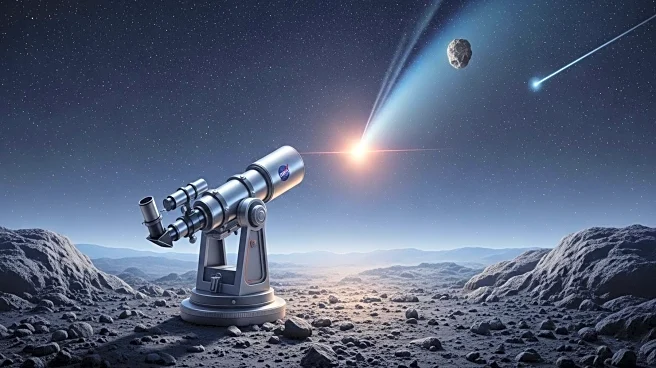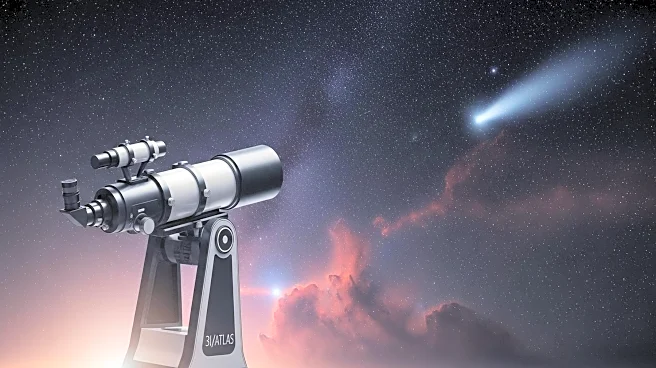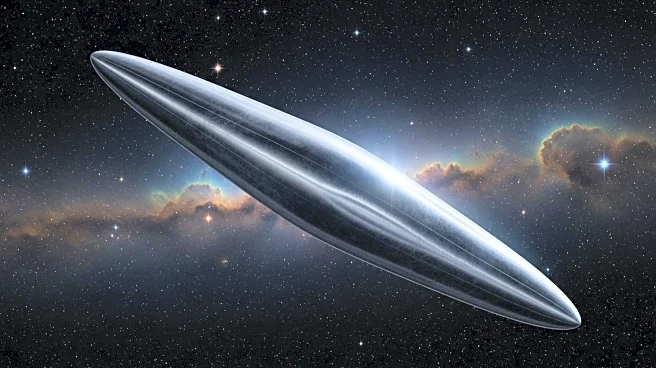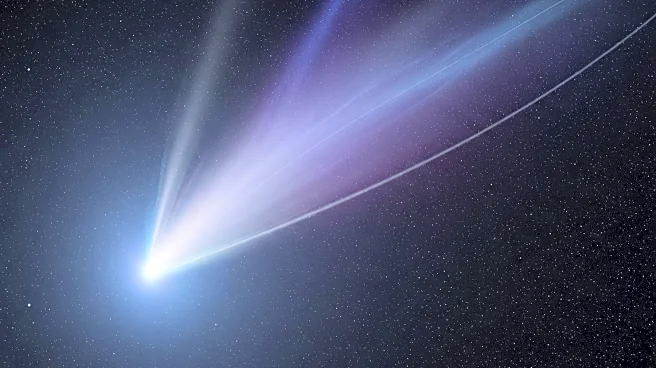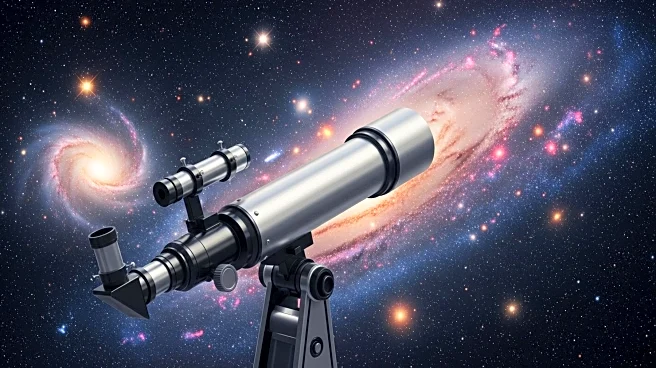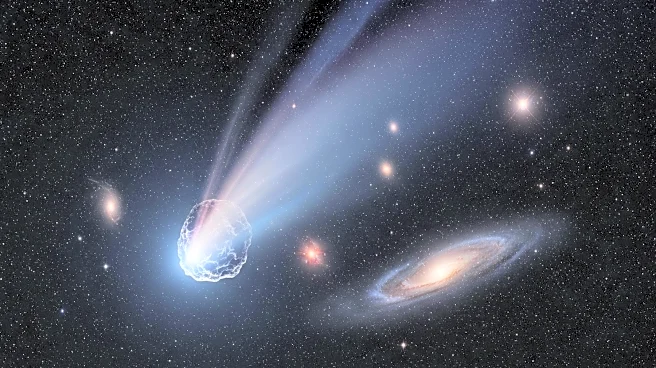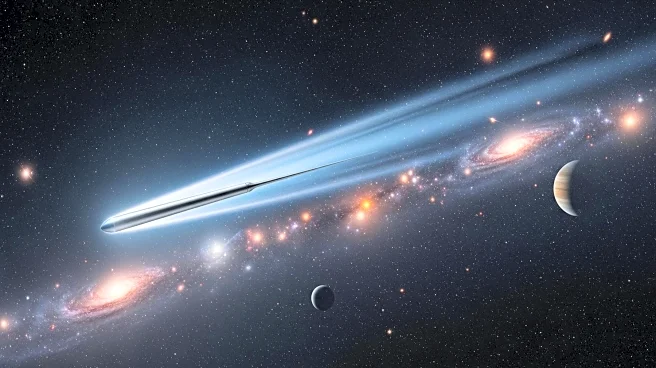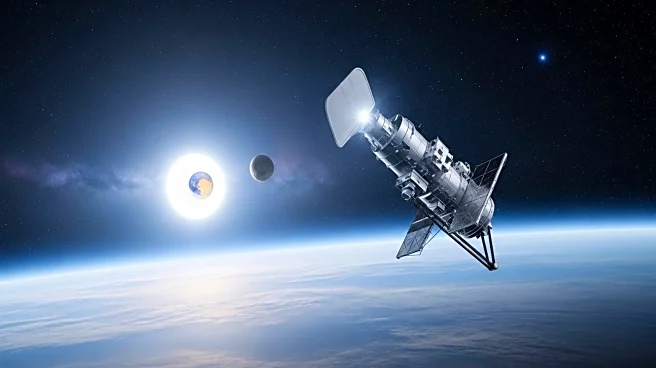What's Happening?
Recent studies on the interstellar object 3I/ATLAS have revealed it to be significantly more massive than previously thought, with a mass exceeding 33 billion tons and a diameter larger than 5 kilometers. This discovery was made through observations that showed a lack of non-gravitational acceleration, suggesting a solid-density nucleus. The findings indicate that 3I/ATLAS is more massive than other known interstellar objects, such as 1I/`Oumuamua and 2I/Borisov, by several orders of magnitude. The research involved data from the Minor Planet Center and observations from various telescopes, including the Hubble Space Telescope and Gemini South.
Why It's Important?
The discovery of 3I/ATLAS's mass and size challenges existing theories about the interstellar mass reservoir and the frequency of such large objects. It raises questions about the origins and composition of interstellar objects, potentially indicating a technological origin or an unusual chemical composition. This finding could lead to a reevaluation of the processes involved in the formation and detection of interstellar objects, impacting future astronomical research and exploration strategies. Understanding 3I/ATLAS's nature may provide insights into the dynamics of interstellar space and the materials ejected from exoplanetary systems.
What's Next?
Upcoming observations, including those by the HiRISE camera on the Mars Reconnaissance Orbiter and the Juno spacecraft near Jupiter, will provide further data on 3I/ATLAS's surface area and composition. These studies aim to refine estimates of the object's mass and diameter, potentially confirming or refuting the hypothesis of a technological origin. Continued monitoring and analysis will help determine the object's trajectory and chemical makeup, contributing to a deeper understanding of interstellar phenomena.
Beyond the Headlines
The findings about 3I/ATLAS highlight the complexities of interstellar exploration and the potential for discovering unknown cosmic phenomena. They underscore the importance of advanced observational technologies and international collaboration in astronomy. Ethical considerations may arise regarding the implications of discovering technologically manufactured objects in space and the prioritization of scientific research. The study of 3I/ATLAS may lead to new theories about the nature and evolution of interstellar objects.

